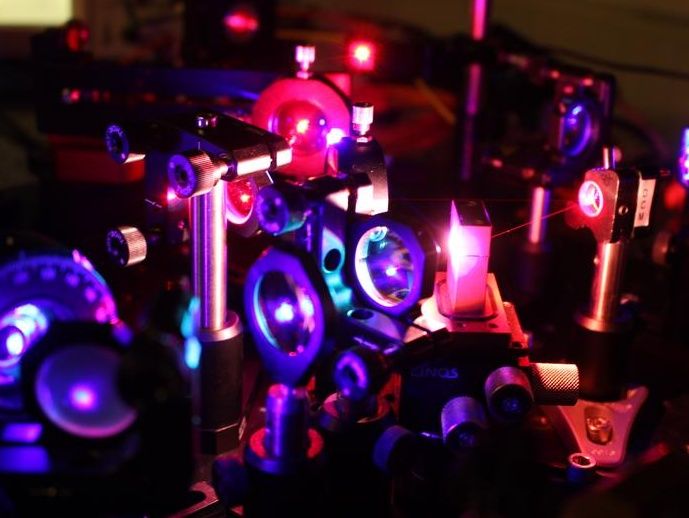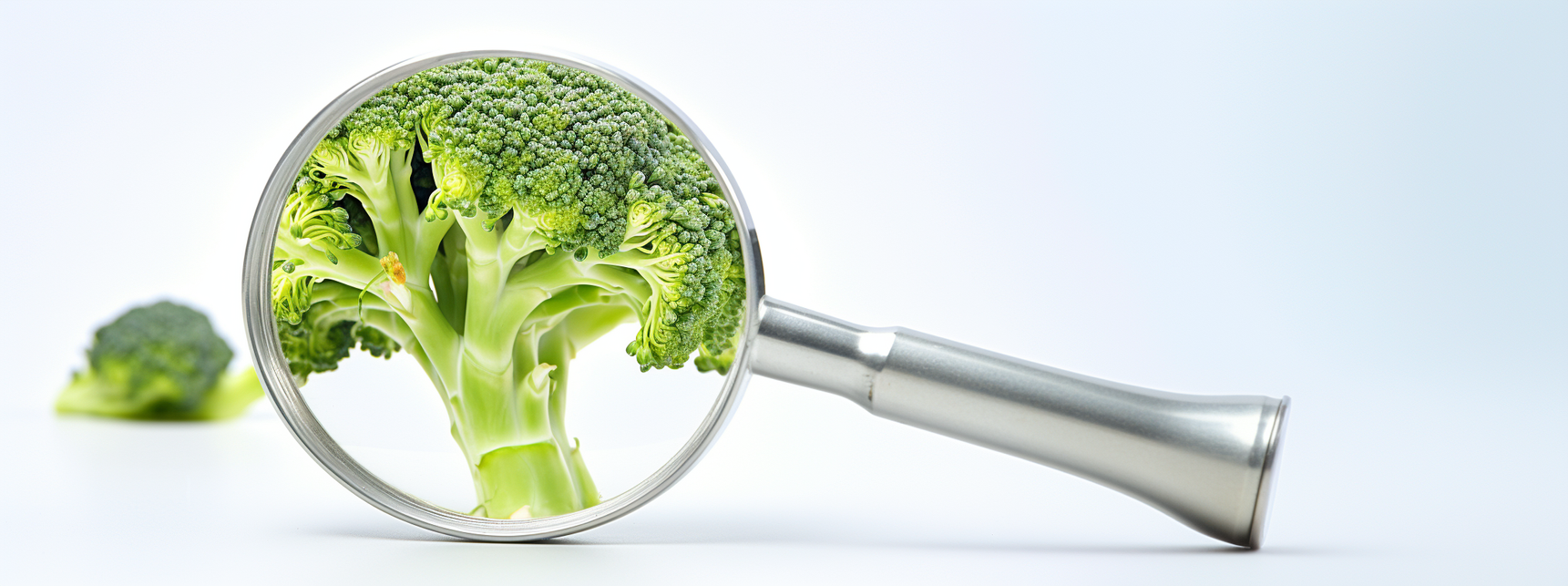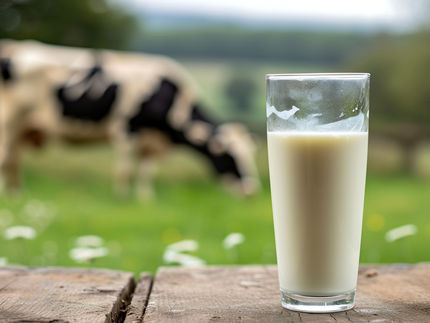Detecting food fraud - thanks to light quanta
Check food for content and origin more cost-effectively
When shopping in the supermarket, consumers must be able to rely on the food label. But is it always correct? In the joint project QSPEC, AMO GmbH, Laser Zentrum Hannover e.V. (LZH), AG Photonische Quantentechnologien of Leibniz Universität Hannover (LUH), TOPTICA Photonics AG, AMOtronics UG and Deutsches Institut für Lebensmitteltechnik (DIL) want to develop a new analysis method that uses quantum mechanical effects to check food for content and origin more cost-effectively.

For the QSPEC project, the LZH is developing novel laser beam sources that can be used to generate quantum frequency combs.
LZH
Fraud in food ingredient claims can not only cause economic damage, but also lead to health risks. Laboratories therefore use authenticity tests to determine whether the declared geographical origin of foods is correct, whether certain ingredients such as palm oil have actually been omitted, or whether no others have been added. To date, nuclear magnetic resonance (NMR) spectroscopy has been used for these analyses. NMR spectroscopy makes it possible to uniquely identify almost any organic substance in a given sample. However, the analyses are very expensive - the equipment needed for them is large, complex and costs several million euros.
Non-contact measurement by quantum
In the BMBF-funded project QSPEC, AMO, LZH, the AG Photonic Quantum Technologies of LUH, TOPTICA, AMOtronics and the DIL now want to develop an alternative testing method: The quantum-based spectroscopy method should be more compact, less expensive and highly sensitive.
Measuring with entangled quanta
"We are researching a method that uses entangled photons to measure the substance to be analyzed at one wavelength and detect the information obtained from it at another wavelength," explains Dr. Stephan Suckow, head of the nanophotonics group at AMO GmbH and joint coordinator of the QSPEC project.
"In the first step, an entangled photon pair consisting of a long-wavelength and a short-wavelength photon is generated," Dr. Suckow further explains. The long-wavelength photon now interacts with the sample, changing its phase, for example. This manipulated photon pair is then fed into another process in which yet another photon pair is generated. The information contained in the pair is transformed by quantum interference, so that it can eventually be read out simply by the count rate of the short-wavelength photons. As carriers of information, the short-wavelength photons are particularly easy to measure with current technology. In this context, the bandwidth of the photon pairs makes it possible to spectrally resolve the sample.
"The resulting spectra of the individual food samples are like fingerprints," explains Dr. Suckow "We can then compare these fingerprints with other reference samples and thus draw conclusions about ingredients and geographical characteristics."
The goal: New analytical tools for food quality assurance
Necessary for the generation of the quantum frequency combs are novel laser beam sources, which LZH and TOPTICA are developing for the project. AMO GmbH will use nanolithographic methods to create chips that accommodate the necessary technology in a very small space. AMOtronics will contribute the ultrafast electronics required for detection. The Institute of Photonics at LUH will subsequently combine the individual components into a system so that the DIL can test the new method and build a reference library.
From the composition of the ingredients, the origin of olive oil, fruit juice, honey and many other foods can be determined beyond doubt. The detection of contaminants in the lowest concentrations is also possible. This would be the basis for a new generation of analytical tools that would allow comprehensive quality assurance in food production.
About QSPEC
The QSPEC project aims to provide the basis for a new generation of analytical tools with sensitivity almost comparable to NMR, but at a much lower cost. QSPEC is funded by the German Federal Ministry of Education and Research (BMBF) under the funding measure "Lighthouse projects in quantum-based metrology to address societal challenges".
Note: This article has been translated using a computer system without human intervention. LUMITOS offers these automatic translations to present a wider range of current news. Since this article has been translated with automatic translation, it is possible that it contains errors in vocabulary, syntax or grammar. The original article in German can be found here.
Most read news
Other news from the department science

Get the food & beverage industry in your inbox
By submitting this form you agree that LUMITOS AG will send you the newsletter(s) selected above by email. Your data will not be passed on to third parties. Your data will be stored and processed in accordance with our data protection regulations. LUMITOS may contact you by email for the purpose of advertising or market and opinion surveys. You can revoke your consent at any time without giving reasons to LUMITOS AG, Ernst-Augustin-Str. 2, 12489 Berlin, Germany or by e-mail at revoke@lumitos.com with effect for the future. In addition, each email contains a link to unsubscribe from the corresponding newsletter.
Most read news
More news from our other portals
See the theme worlds for related content
Topic world Food safety
Food safety is at the heart of the food and beverage industry. It ensures that the food we eat every day is not only nutritious, but also free of harmful contaminants. From field to plate, the industry monitors and regulates every step of the process with strict quality controls, advanced testing methods and continuous research.

Topic world Food safety
Food safety is at the heart of the food and beverage industry. It ensures that the food we eat every day is not only nutritious, but also free of harmful contaminants. From field to plate, the industry monitors and regulates every step of the process with strict quality controls, advanced testing methods and continuous research.
Topic world Quality assurance
In the food industry, quality assurance is about much more than safety. It's about ensuring consistent standards that meet consumers' taste, nutritional and aesthetic expectations. Using state-of-the-art analytical methods and strict protocols, Quality Assurance ensures that every product delivers on the brand's promise. From appearance and taste to texture and shelf life, Quality Assurance ensures consumers get exactly what they expect.

Topic world Quality assurance
In the food industry, quality assurance is about much more than safety. It's about ensuring consistent standards that meet consumers' taste, nutritional and aesthetic expectations. Using state-of-the-art analytical methods and strict protocols, Quality Assurance ensures that every product delivers on the brand's promise. From appearance and taste to texture and shelf life, Quality Assurance ensures consumers get exactly what they expect.
Topic World Food Analytics
Food analysis methods enable us to investigate the quality, safety and composition of our food. Whether in the traceability of food, the detection of contaminants or the verification of nutritional information - food analytics plays a crucial role in our health and nutrition. Welcome to the exciting world of food analytics!

Topic World Food Analytics
Food analysis methods enable us to investigate the quality, safety and composition of our food. Whether in the traceability of food, the detection of contaminants or the verification of nutritional information - food analytics plays a crucial role in our health and nutrition. Welcome to the exciting world of food analytics!





























































